Review: Orgatec 2022
After a four year break due to the pandemic, Orgatec – the bi-annual workplace trade show, returned to an unseasonably warm Cologne between 25 and 29 October. We asked Design Insider Ambassador Barry Jenkins, Director at BroomeJenkins, to review this year’s event.
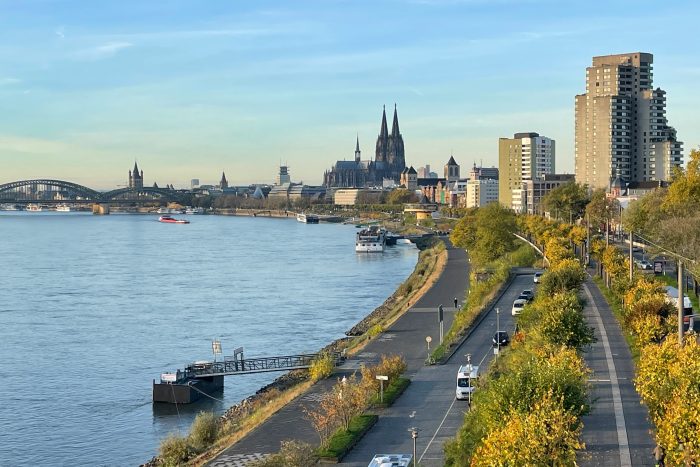
Although an international show, Orgatec always had a strong German bias given the scale of the local industry. However, this year with the notable absence of a number of leading names including Vitra, Brunner and Wilkhahn, the show seemed more international. Drawn from across Europe, Scandinavia and the Far East, as well as a dozen from the UK including Ocee, Camira, Allermuir and Hotbox, there were more than 600 companies taking part.
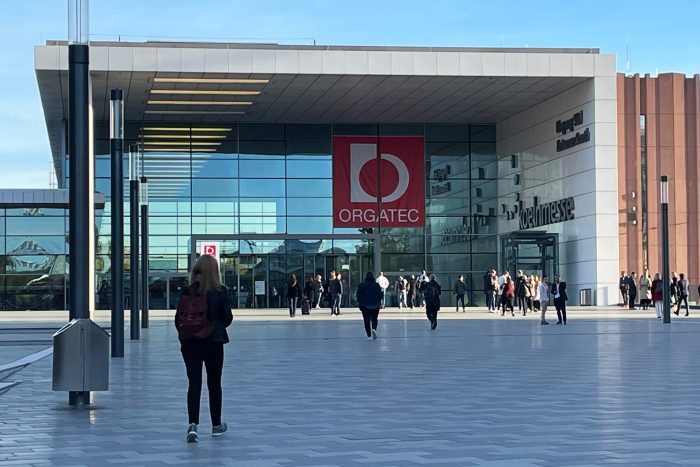
Orgatec aimed to present ‘new visions of work’ by supporting the exhibition with an events programme that explored how to make the workplace sustainable, smart and flexible. One event hosted by Joanna Knight and WOD (Women in Office Design) brought together 12 UK Corporate interiors experts to discuss how to reduce waste. However, given its importance, sustainability was less prominent than I had expected, although several manufacturers were keen to show how they are using biomass such as Hemp and recycled and post consumer materials including PET from drinks bottles. Of course this is good to see, even if the ideas have been around for a while and slow to catch on.
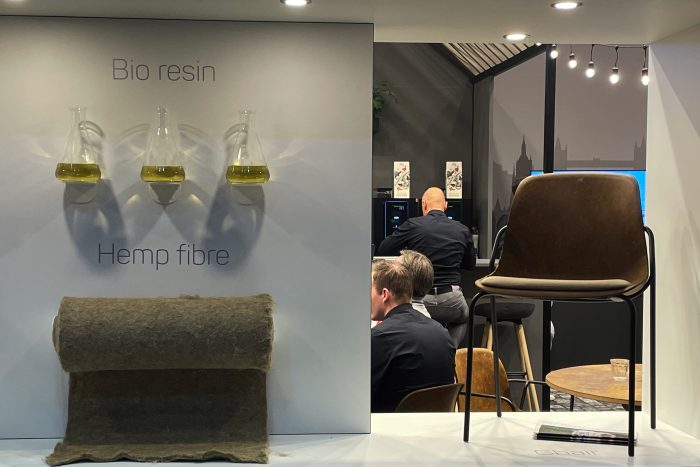
The growth in ‘Hybrid working’ and what some call ‘hotelification’ was clearly evident in the products on show. Fewer desk systems and task chairs confirm how the workplace today requires a range of diverse settings including outdoors.
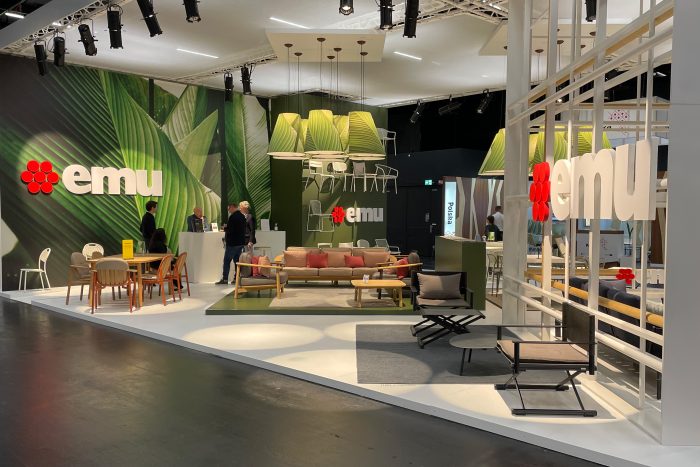
Emu and Extremis were just two of several outdoor furniture manufacturers who had taken space in the main halls, and other indoor furniture companies such as Pedrali showed outdoor ranges. With soft and loose furniture replacing systems’ furniture ranges, Orgatec is more eclectic than it once was.
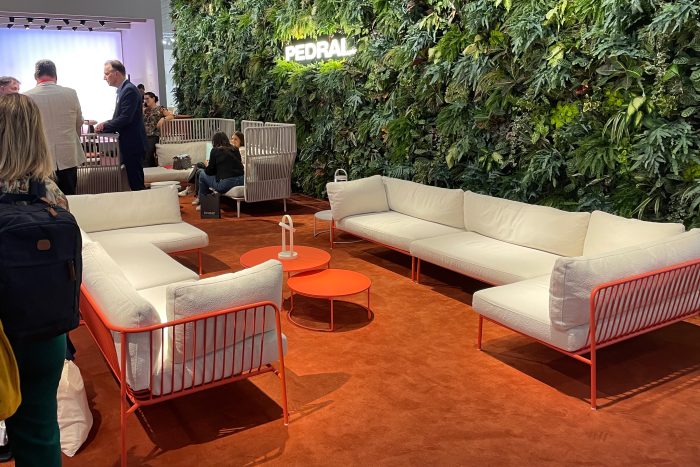
Given that quiet concentrated work can be done at home, the office today is increasingly a social hub for workers to meet and collaborate in person. To support collaborative working, mobile surfaces and media units, white boards and easels of different degrees of sophistication were popular. Some were simple stand alone, whilst others form a range of different units becoming a complete form of flexible sub-architecture.
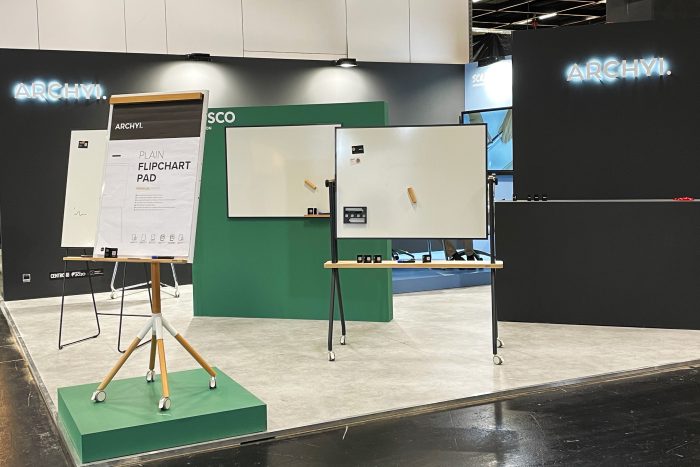
From memory, Vitra launched their Dancing Walls at Orgatec in 2018, being one of the first to recognise the opportunities of using adaptable vertical space. With a need to remain flexible whilst managing disturbances in an otherwise open space, the idea of mobile walls, acoustic screens and panels, and the now ubiquitous pod offers a range of different solutions. There are many ways that visual and acoustic privacy is provided from soft seating with screens or hoods through to modular rooms.
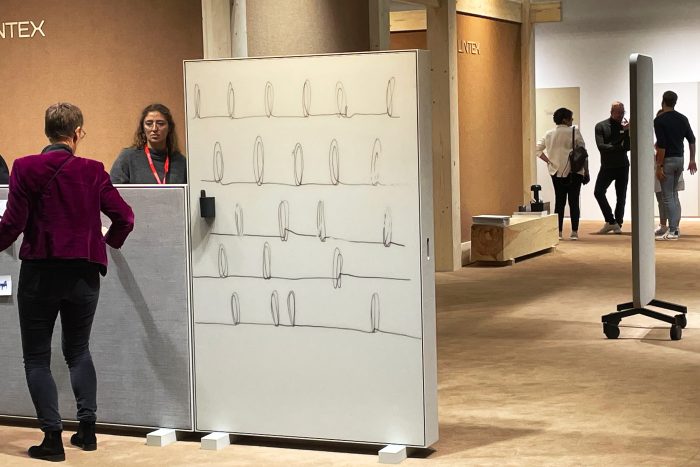
A Finnish company new to me was Loook. Nap3 is the third generation ‘Neuron Activation Pod’, designed to help provide a safe and effective place to snatch a meaningful ‘power nap’. Using very low ‘sinusoidal vibrations’, Nap3 uses technology to provide relaxing stimulation to ease stress and to aid mental and physical recovery. So whether designed for single occupancy to take a private phone call, a larger meeting booth for a small team or a private space to recoup, pods have become a flexible and relocatable alternative to built-in facilities for corporate environments.
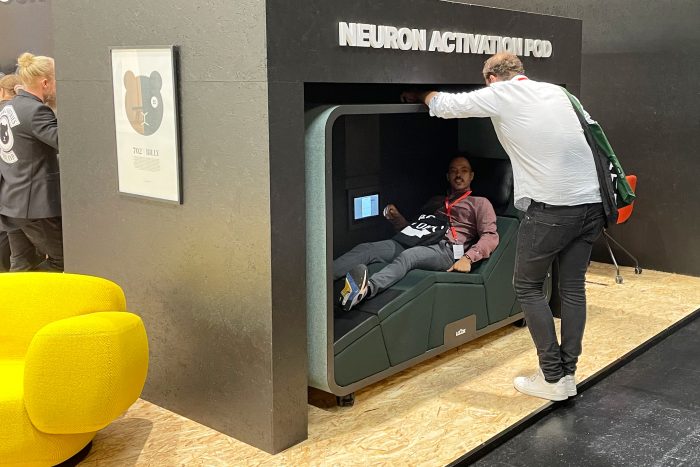
Loook
I am advised colour trends are cyclical. For some time we have seen colours inspired by nature, earthy tones and the use of natural fibres. Although this trend has not gone away, I was interested to see that a single pallet did not dominate the show. There were many different ideas ranging from harmony to discord, subtle to bright. 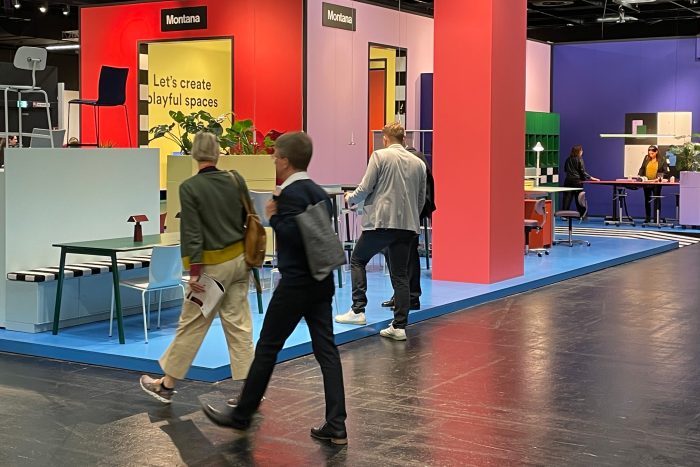
The pandemic broke a number old habits like going to the office and possibly attending trade shows. Planning major events became even more risky than it was already, and so in the run-up to the event, the organisers were keen to stress that apart from seeing new innovative products, Orgatec is essentially a social opportunity to network. Of course that is true of any live event, and given the reasons why there was an imposed break, suggests a desire to return to normality.
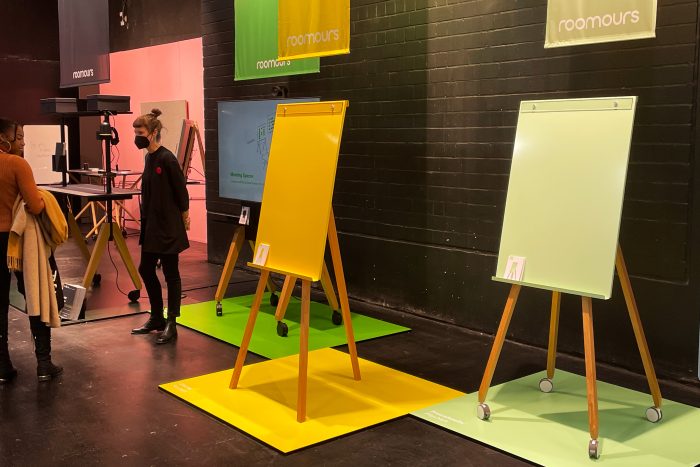
It is worth noting that how we work and the changes Orgatec showcased, were not created in response to the pandemic, but simply accelerated by it. Some may see this as rapid change while others see it as a gradual and inevitable progression. The same can be said about trade shows. Is the absence of major manufacturers an indication of further change in our industry? Are trade shows an expensive habit and less effective than they were? Considering the economic and environmental challenges we all face, should we ask the question whether set-piece trade shows are still relevant, viable or sustainable?
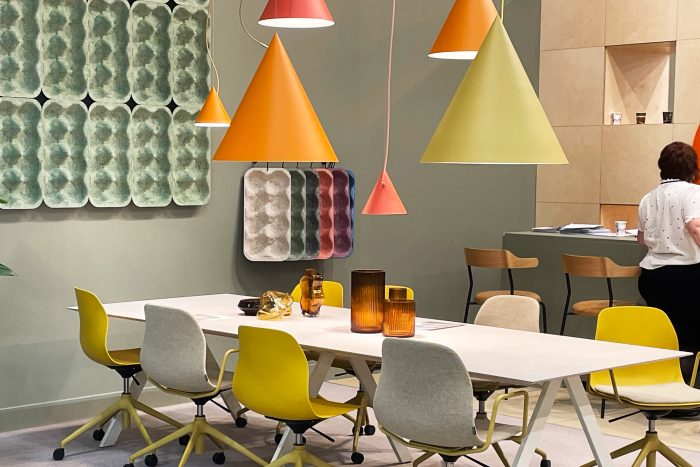
My view is that many exhibitors and delegates I spoke to at the show were pleased to be there and to touch and feel the goods and to meet contacts and colleagues in person. One German seating manufacturer told me they had prepared for the worst and were blown away by the level and quality of activity they had. That was a common story from a number of other manufacturers I spoke to.
So, given the many miles travelled by exhibitors and delegates alike, I am not sure how it would ever be possible to reconcile the economic benefits versus the environmental impact of trade shows like Orgatec. But then that is the ‘elephant-in-the-room’ for any industry sector despite a commitment to sustainability.
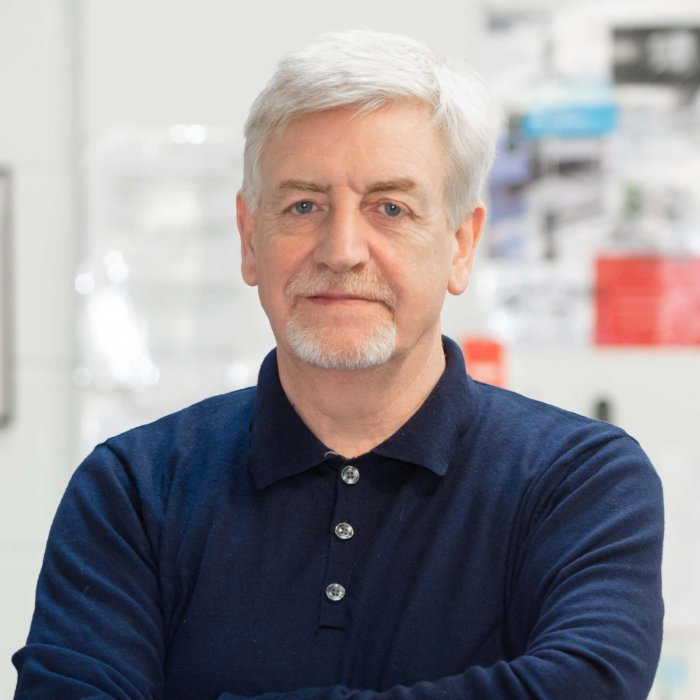
Written by Barry Jenkins, Director of Broome Jenkins, designers with a special interest and experience of designing products for the workplace. Working with leading manufacturers from the UK, Europe, Scandinavia and the Far East they have considerable technical experience and a well developed knowledge based approach.




